With our summer cruise behind us, there were a few projects I wanted to get done while the weather was still nice.
- Windlass Gypsy cleaning–While anchoring, we noticed the windlass making some squeaking noises from time to time. This prompted us to watch some YouTube videos to see how to clean and grease the moving parts, which was long overdue. I removed the clutch cones, then cleaned them with Scotchbrite pads and applied a thin film of lithium grease to the moving parts.
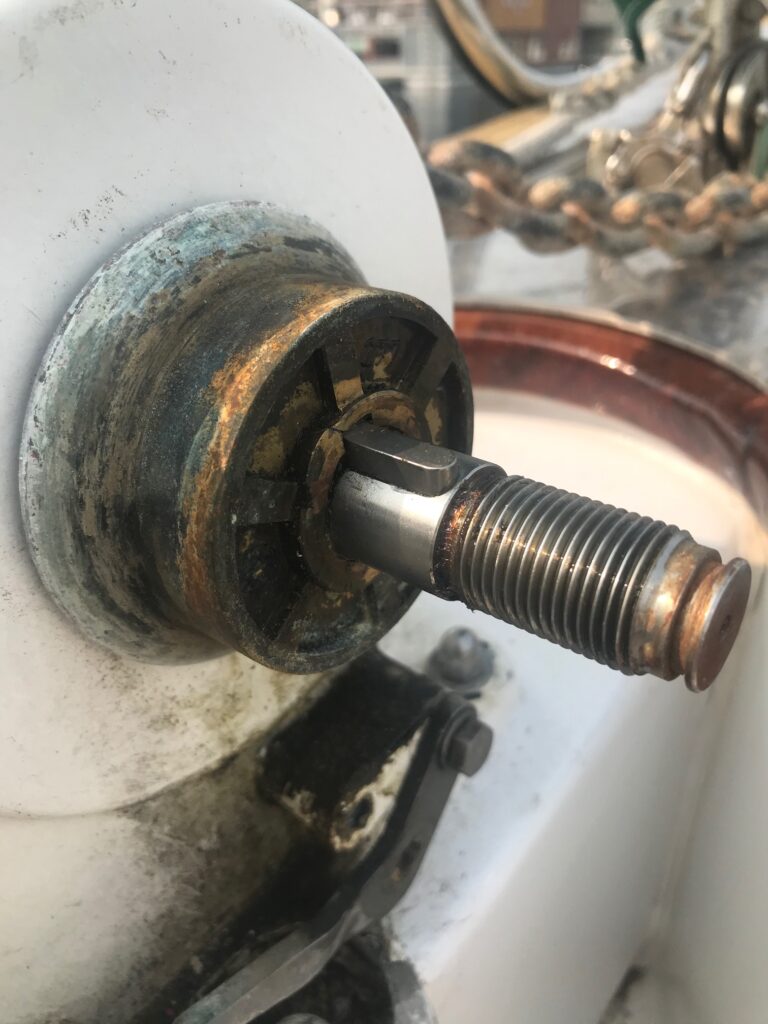
Inner wheel of gypsy 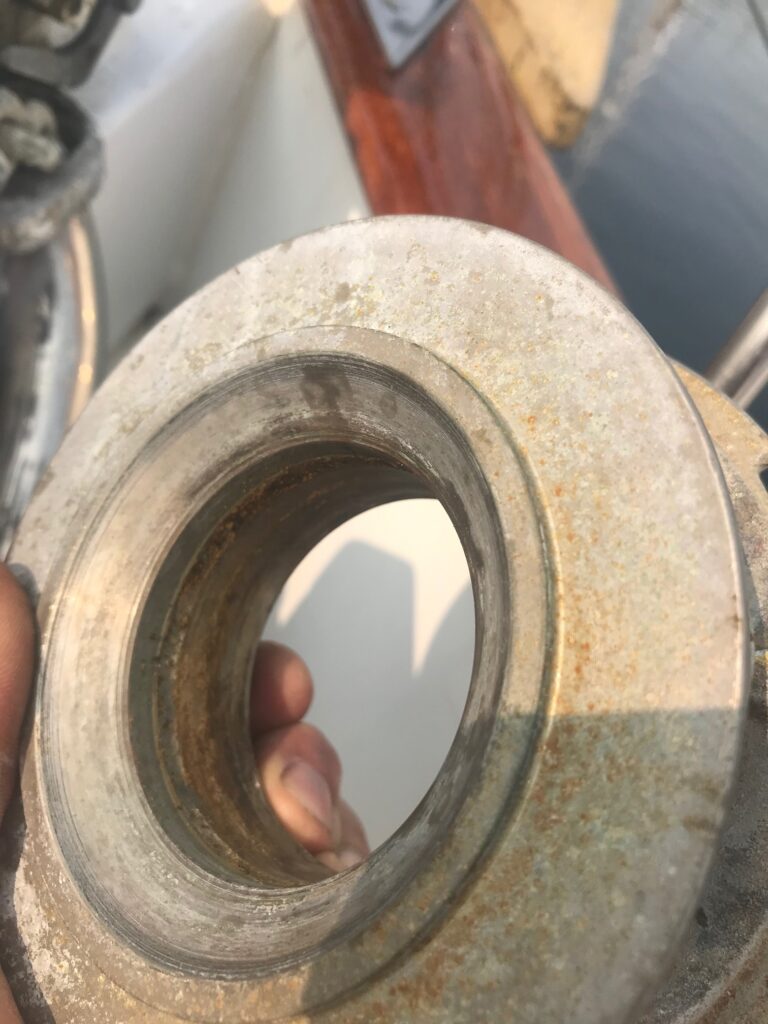
Chain wheel 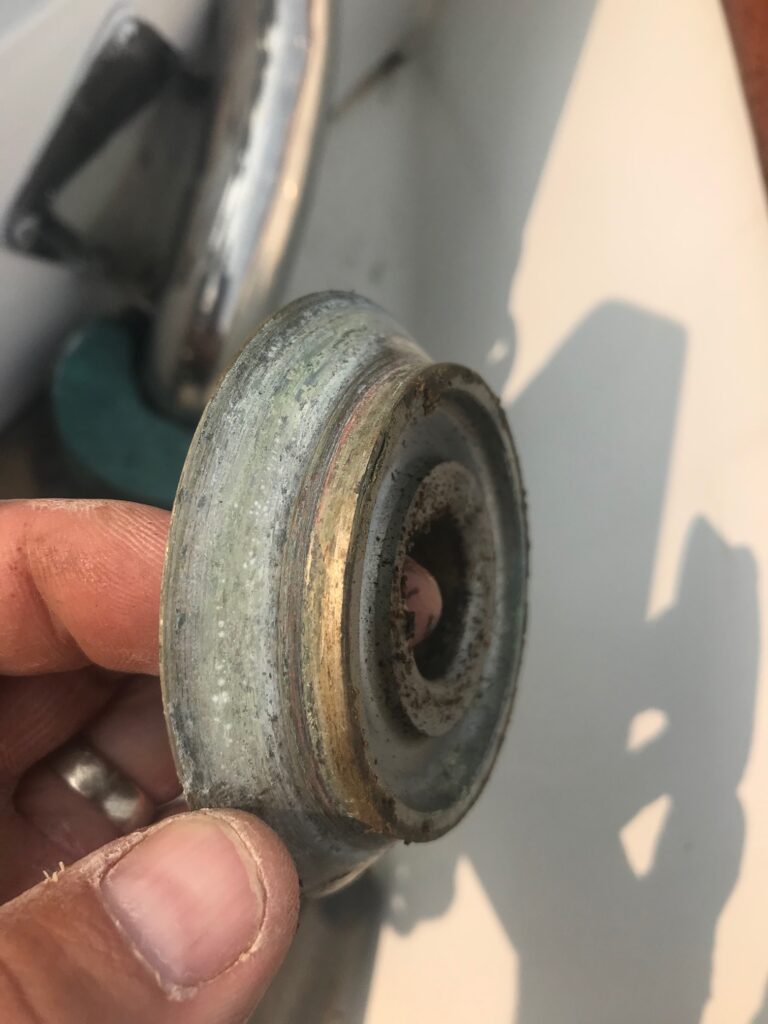
Outer clutch cone 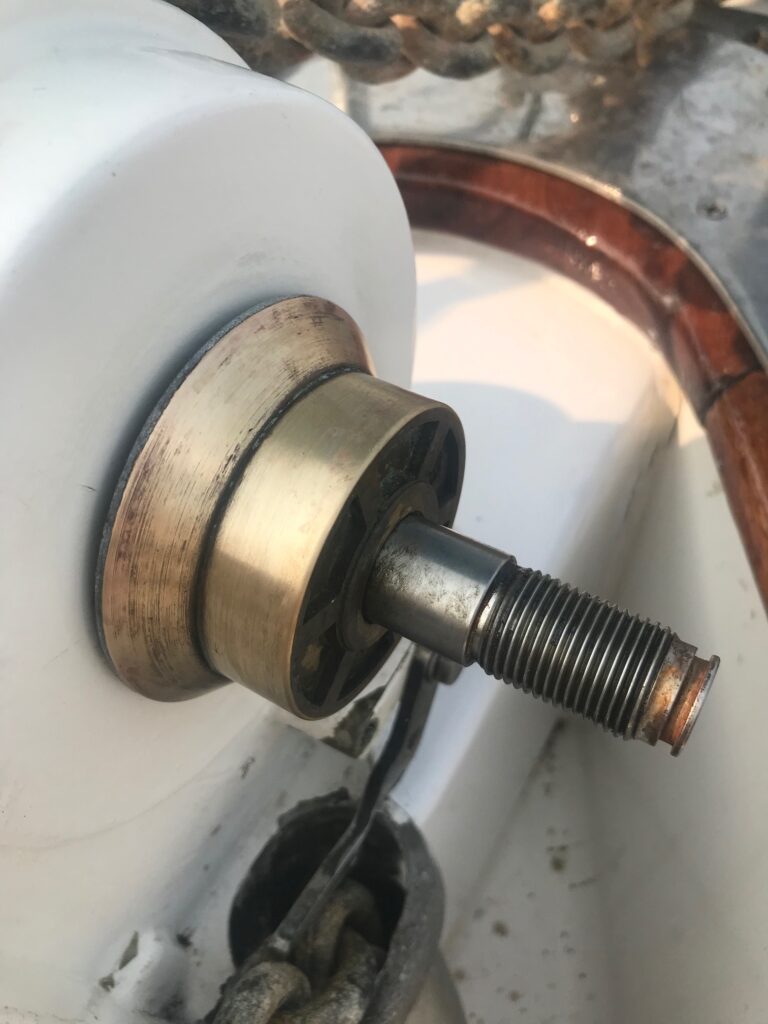
After cleaning and lubricating 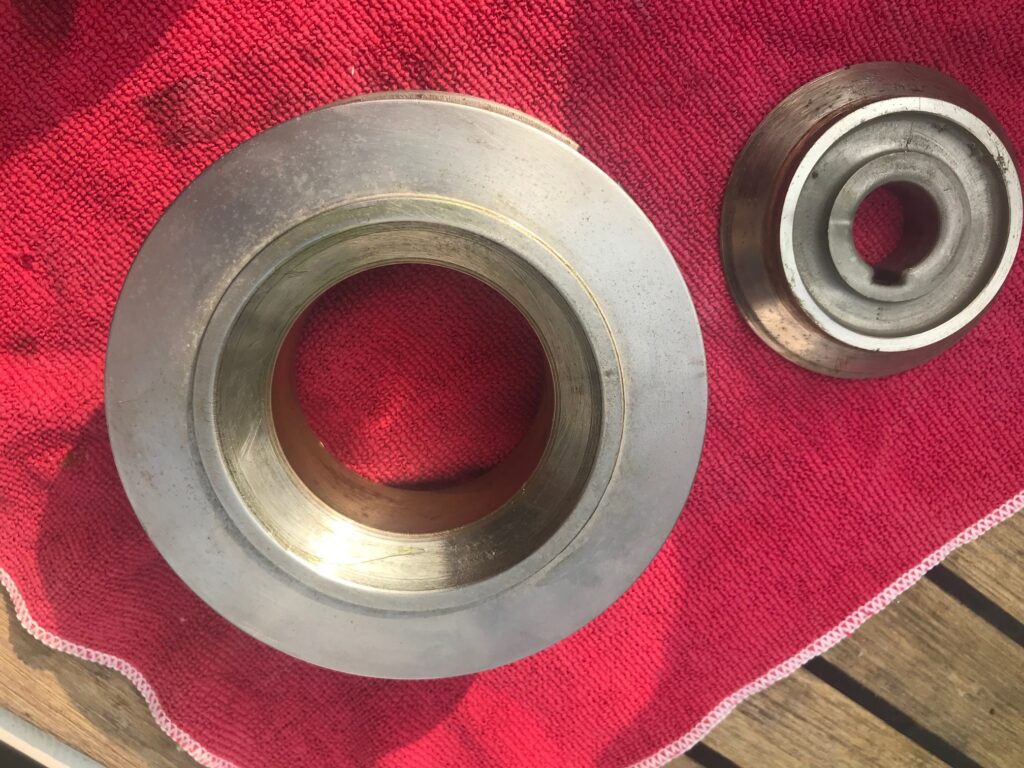
Cleaned and lubricated
- Anchor Chain Marking–knowing how much chain is out is important while anchoring. In the past, we used a combination of color-coded paint and zip ties to mark the chain every 25 feet. The zip ties last years, but eventually some break off and need to be replaced. After laying out most of the 300′ of chain on the dock, I replaced the colored zip ties and also used molded silicon chain markers in a particular color-pattern. I decided not to repaint the chain as most of the paint was still good (except the the markings below 100 foot). The colored zip tie markings are as follows: 1R=25′, 2R=50′, 3R=75′, 1Y=100′, 1Y1R=125′, 1Y2R=150′, 1Y3R=175′, 1B=200′, 1B1R=225′, 1B2R=250′, 1B3R=275′.
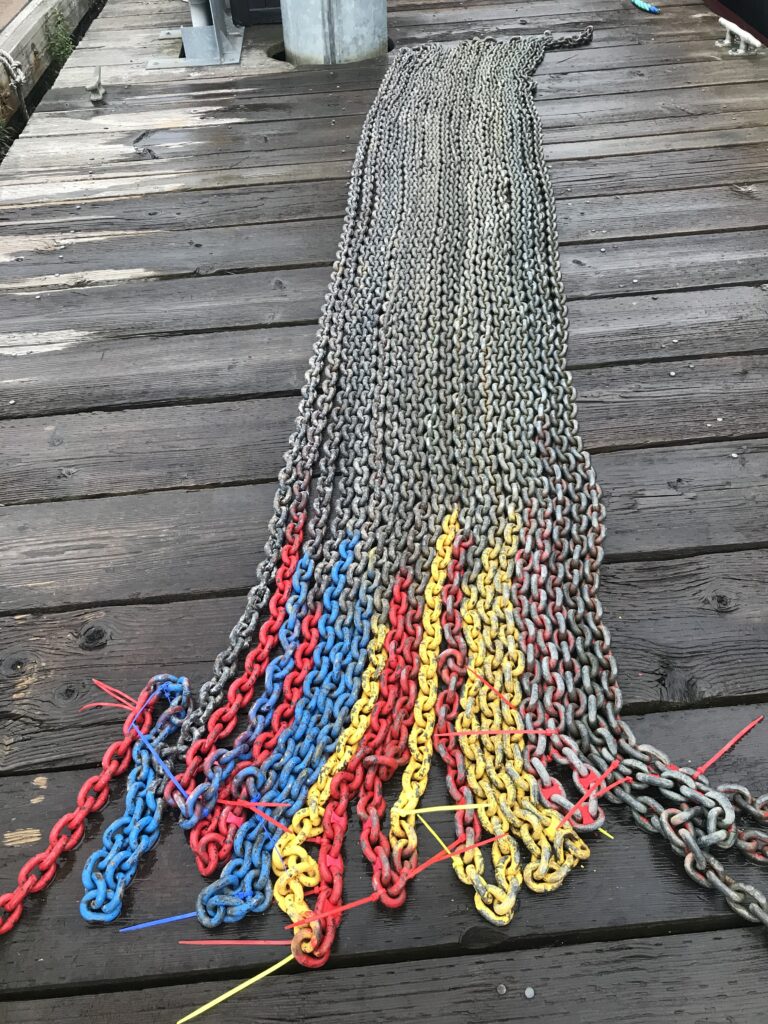
Chain marking 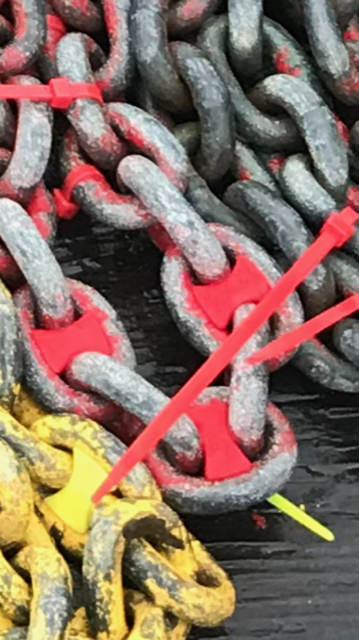
New silicon markers added
- Adding Cockpit USB Port–We usually run an iPad with Navionics in the cockpit and use it for route planning and as a backup to the Garmin chartplotter. Having a USB charge port in the cockpit will allow us to keep the iPad as well as iPhones charged without needing to take them below decks. I mounted a USB dual-port with digital voltage display inside a waterproof box. The box is held in place with 3M dual lock fasteners (similar to Velcro but much better). I also added a waterproof switch on the top of the box for turning on/off an LED light strip that’s mounted under the dodger.
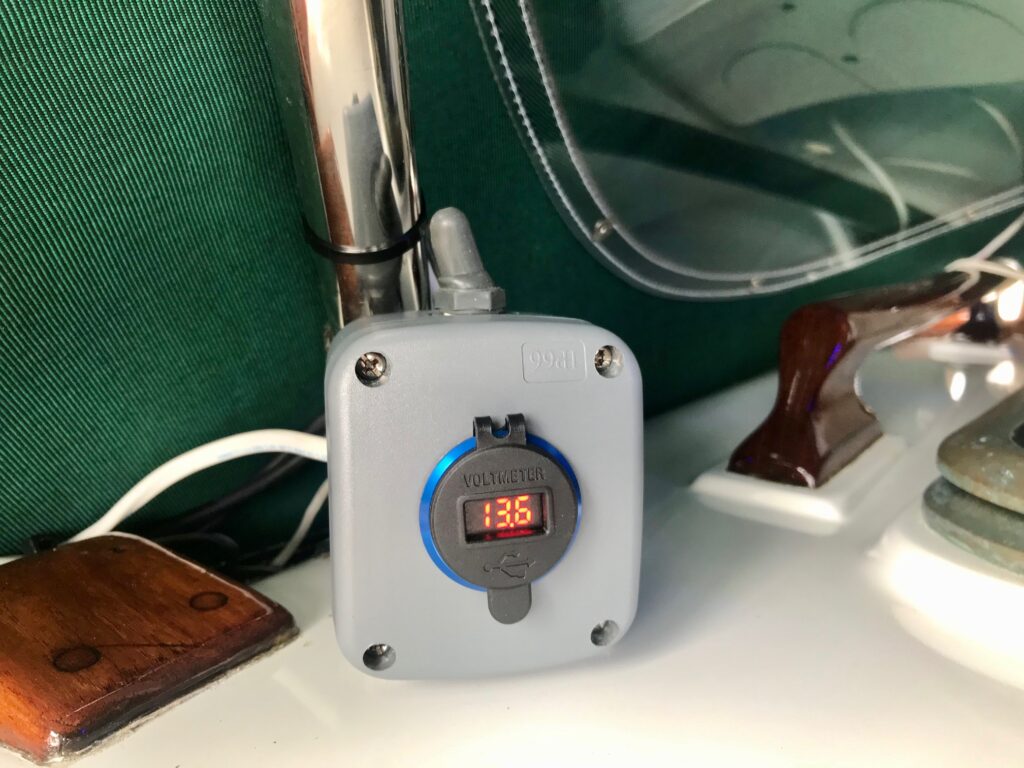
USB Port and LED Switch 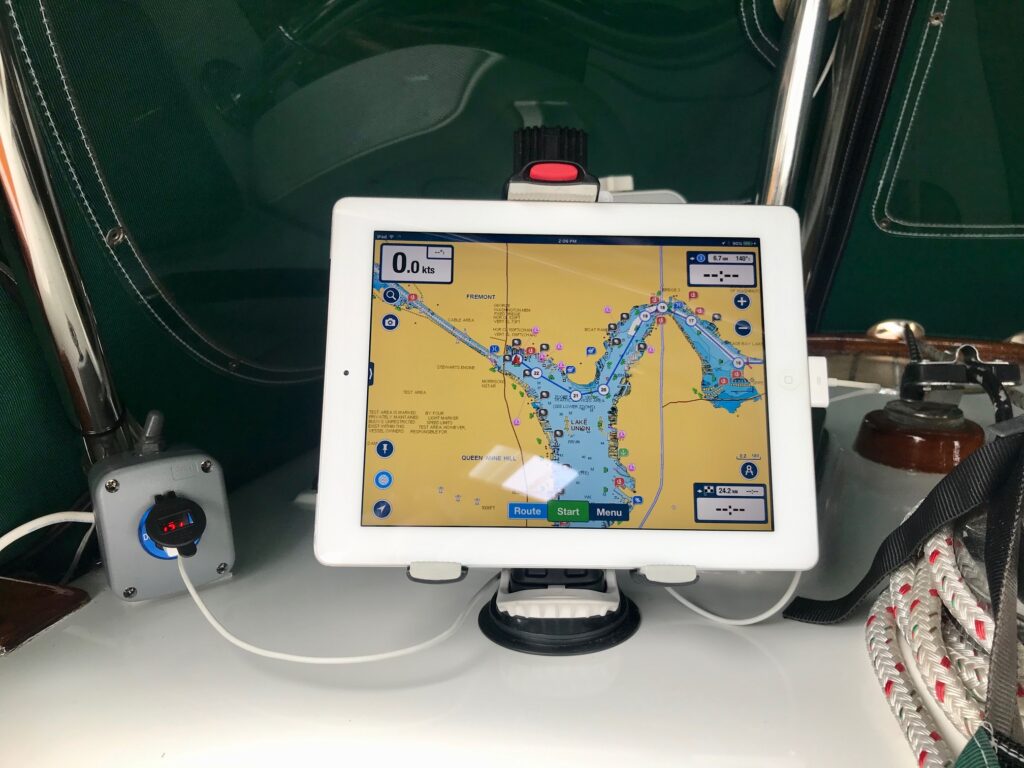
Charging iPad
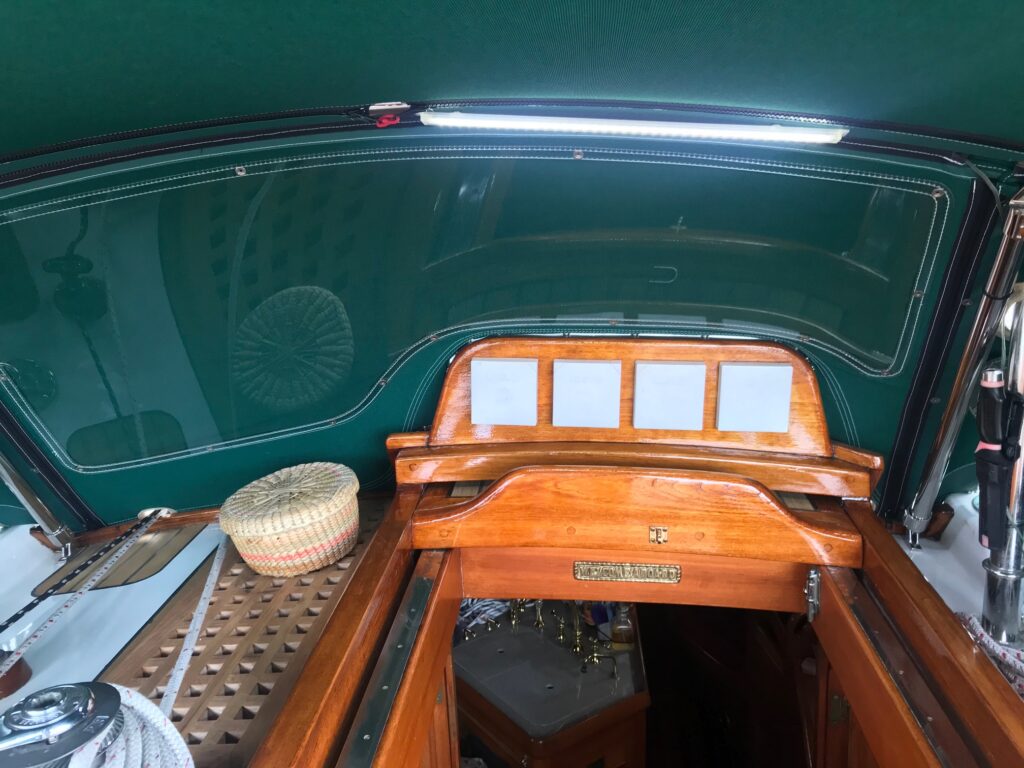
LED Light Strip (red-green-blue-white modes)
- Grab Rail Refinishing–The final round of teak refinishing for the summer! I stripped and recoated 2 of the 4 grab rails in the spring-time. These are difficult to strip down to bare wood because of the curves and angles. I finally got the last two refinished during a week of dry weather in September. For stripping off the old varnish, I used a combination of Orange chemical stripper to loosen the varnish, then a heat gun and scraper to remove it. I followed up with 80 grit sandpaper, then 220 grit, applied Awlwood Primer, lightly sanded with 400 grit, then 8 coats of Awlwood clear with a light sanding after every 2 coats. I did this wearing an N-95 mask as Seattle was choked with smoke that blew in from the Oregon and California wild fires.
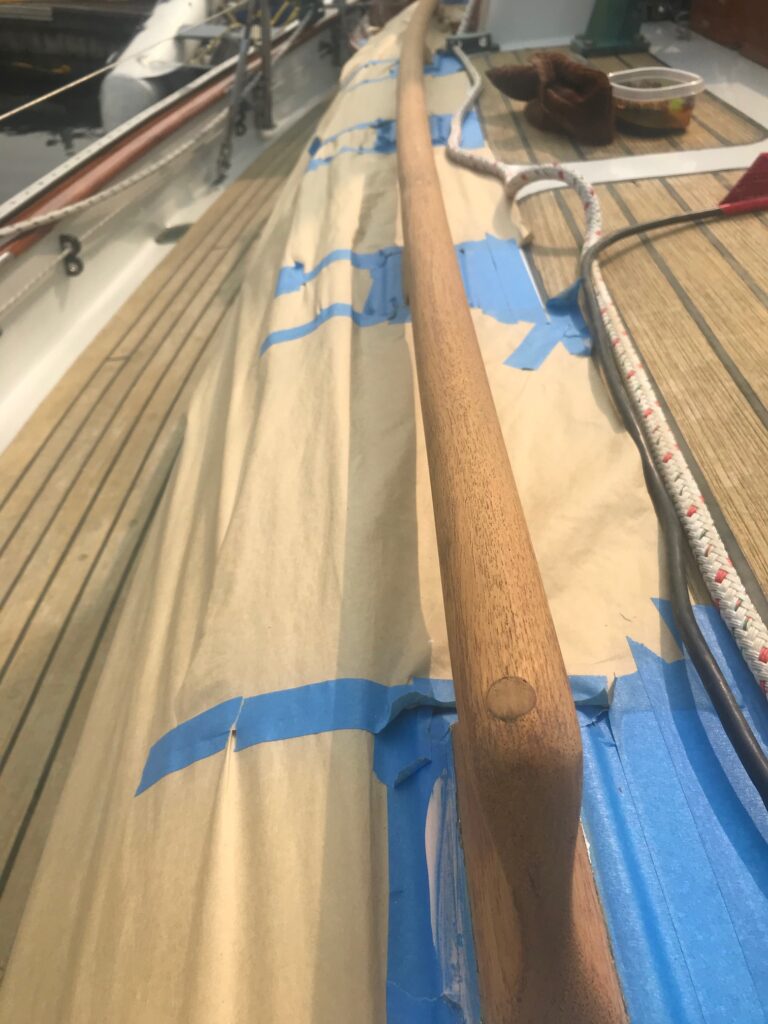
After stripping & sanding 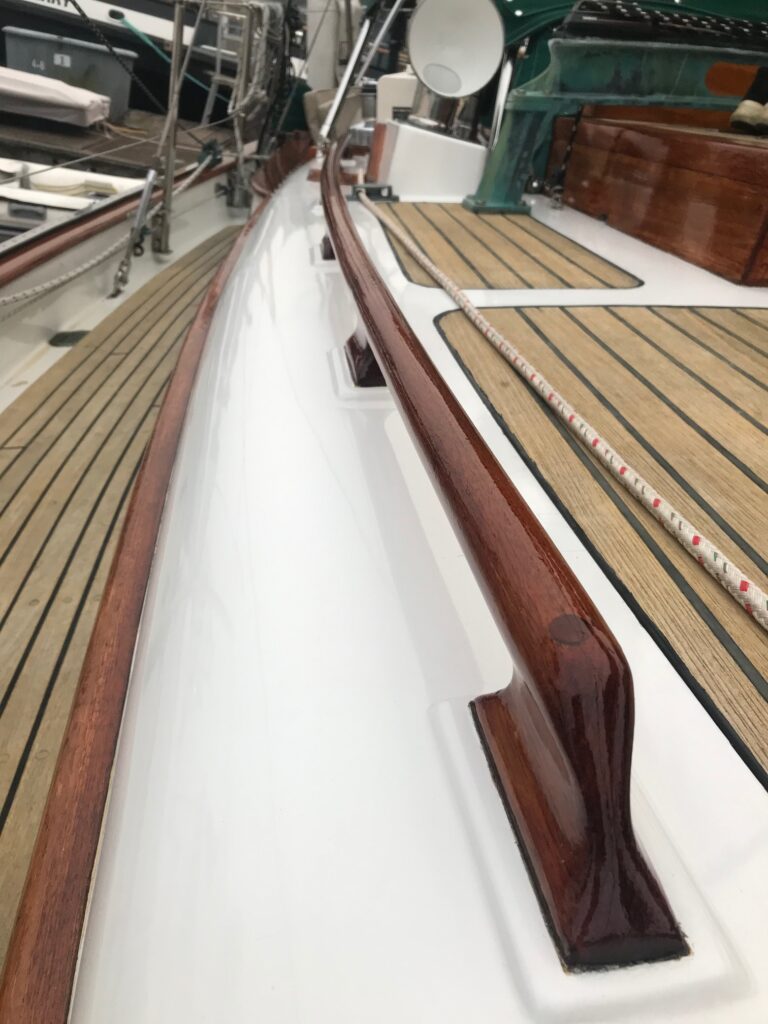
After 8 coats of Awlwood Clear
- WiFi Internet Connection–The marina we’re in has WiFi but the signal is weak from where the boat is. To boost the signal, I added an antenna/radio and to distribute WiFi on the boat I added a router. The end result is a very strong signal on the boat that even gives me high speed data connectivity to allow me to work from the boat. The equipment includes a Ubiquiti M2 radio and POE, a 2.4GHz omni-directional antenna, and a TP-Link dual band router. The setup was easy and most components were plug and play. Now we have excellent wireless high-speed connectivity on Apropos.

- Dinghy Air Floor–After several attempts to patch the high pressure hypalon Air Floor during a two-week cruise, it still leaked at places that were difficult to apply a patch (around a doughnut-shaped hole for access to the air keel valve). The dinghy is a little over 10 years old but still in great condition. I decided to attempt patching one more time before buying a new Air Floor for $500, since the overall plan is to replace the dinghy in a few years. After removing the failed patches, I cleaned the surfaces well before applying new patches. It was much easier doing this indoors vs on the boat. The 2-part glue, mixed in a 25:1 ratio, seemed to adhere much better this time. I used 75 lbs of weights placed atop a sandbag over the patches for 24 hours, then let the Air Floor sit another 4 days to fully cure. I also gave it a good cleaning before taking it back to the boat. I put it back in the dinghy and inflated it to 3 psi, then sprayed soapy water around the patches and didn’t see any evidence of leaks. I won’t be too surprised if new leaks develop, but for now i think it’s holding air. I probably won’t be pumping it up to 10 psi any more…
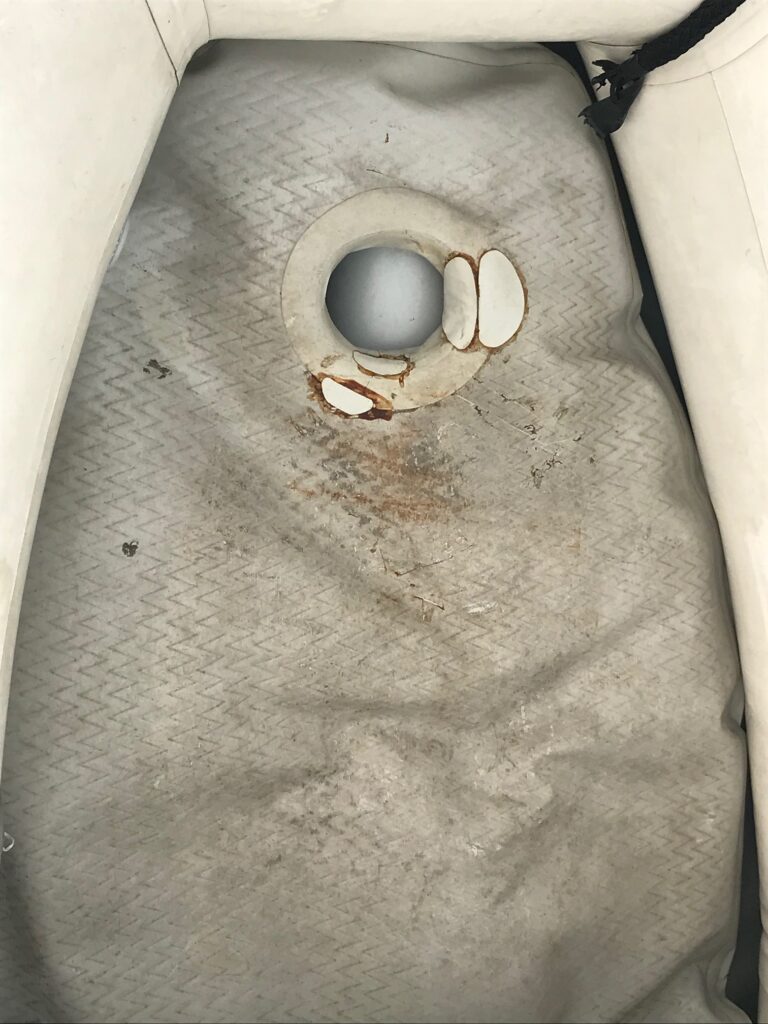
Original patches that failed 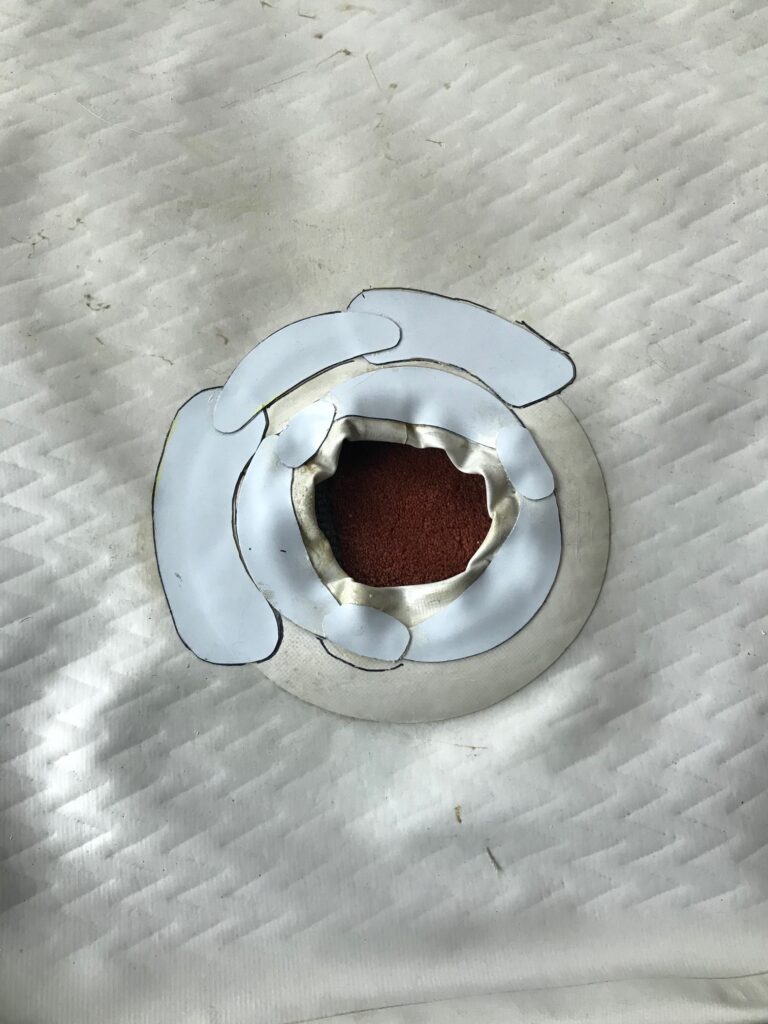
New patches 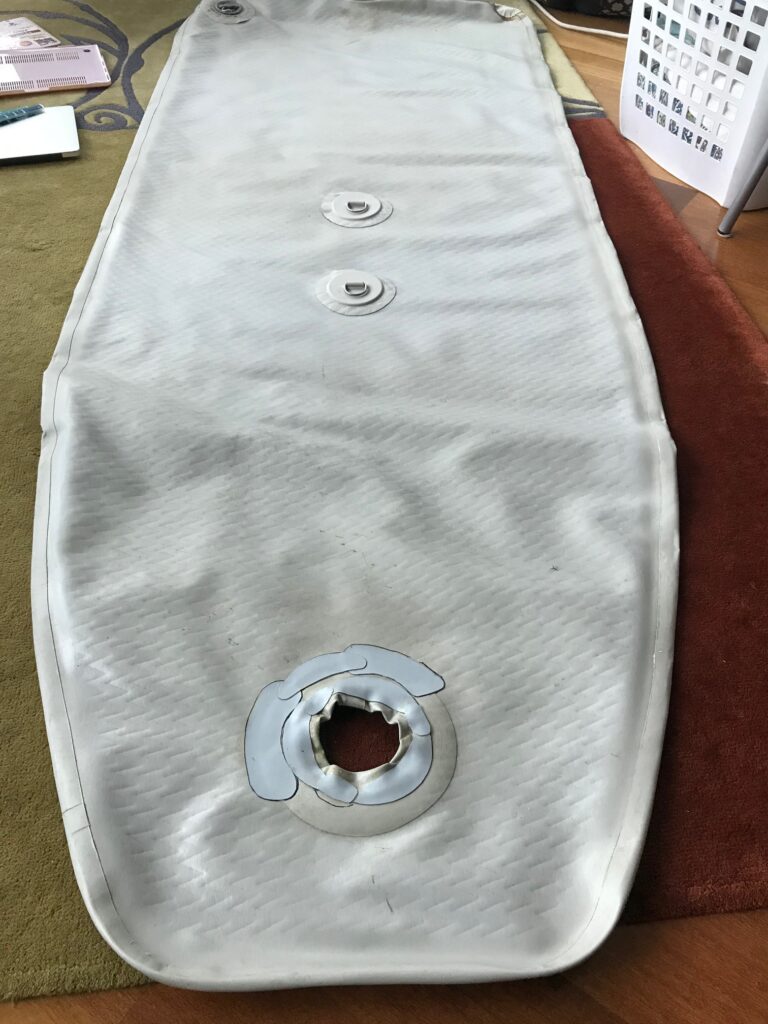
Cleaned hypalon 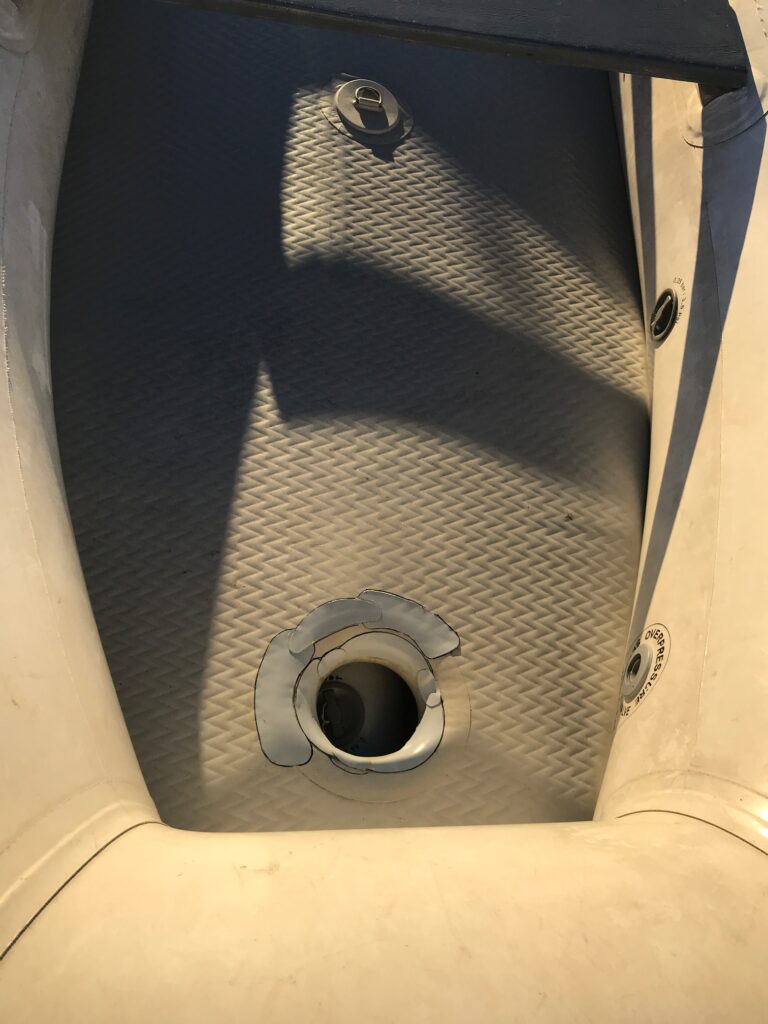
Holding air!